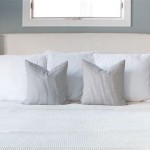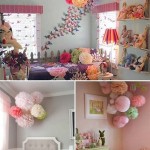Decorating With Mustard Yellow Walls: A Comprehensive Guide
Mustard yellow, a versatile and sophisticated hue, has experienced a resurgence in popularity within interior design. This shade, a deeper, richer cousin of traditional yellow, offers warmth and character to a space, moving beyond the often-perceived brightness of lighter yellows. Decorating with mustard yellow walls requires careful consideration of complementary colors, lighting, and overall design style to create a cohesive and visually appealing environment. This article explores the nuances of using mustard yellow effectively, offering guidance on color palettes, suitable room types, and styling techniques.
The appeal of mustard yellow lies in its ability to evoke feelings of comfort, energy, and even a touch of vintage charm. Unlike brighter yellows that can be overwhelming in large doses, mustard yellow possesses an earthier quality, making it surprisingly adaptable to a variety of decor styles. Its grounding undertones prevent it from feeling overly stimulating, allowing it to serve as a backdrop for a range of furniture and accessories. Moreover, mustard yellow's ability to reflect light subtly can enhance the perception of space and brightness, especially in rooms that may lack natural light.
Before committing to painting walls mustard yellow, it's crucial to understand the different shades that fall under this umbrella. There are variations ranging from muted, almost ochre-like tones to brighter, more vibrant iterations. Selecting the right shade depends on the room's size, lighting conditions, and desired aesthetic. Lighter, more radiant mustard yellows can work well in smaller spaces, while deeper, more subdued tones are often better suited for larger rooms with ample natural light.
Understanding Color Palettes with Mustard Yellow
One of the key challenges in decorating with mustard yellow walls is choosing the right color palette. Mustard yellow can be a strong statement color, and pairing it effectively requires careful consideration of complementary and contrasting hues.
Complementary Colors: The most classic complementary color for yellow is blue. However, with mustard yellow, the pairing becomes more nuanced. Navy blue provides a sophisticated and grounding contrast, while teal or turquoise can create a vibrant and playful atmosphere. The cooler tones of blue balance the warmth of mustard yellow, preventing the space from feeling overwhelmingly warm. Consider incorporating blue in textiles, artwork, and furniture to create a visually balanced room.
Analogous Colors: Exploring analogous colors, those located next to yellow on the color wheel, can also yield beautiful results. Olive green and burnt orange, for example, create a harmonious and earthy palette. These colors share similar undertones with mustard yellow, resulting in a cohesive and calming environment. Using varying shades and textures within this analogous palette can add depth and interest to the room.
Neutral Colors: Neutral colors are essential for grounding and balancing mustard yellow walls. Crisp white trim and ceilings provide a clean and modern contrast, allowing the mustard yellow to stand out. Gray, particularly warm grays with beige undertones (often referred to as "greige"), creates a sophisticated and understated backdrop. Wood tones, from light and airy to dark and rich, also pair well with mustard yellow, adding warmth and texture to the space. Consider using natural wood furniture, flooring, or architectural details to complement the walls.
Accent Colors: Introducing accent colors strategically can elevate the overall design. Coral, a vibrant mix of pink and orange, adds a pop of energy and vibrancy. Black accents, such as picture frames or light fixtures, create a sharp and modern contrast. Metallic accents, like gold or brass, enhance the warmth and richness of mustard yellow, adding a touch of luxury. However, it is important to use accent colors sparingly to avoid overwhelming the space.
Optimal Room Placement and Lighting Considerations
The effectiveness of mustard yellow walls hinges on the room's purpose and the available light. Different rooms can benefit from mustard yellow's unique qualities, but careful planning is essential.
Living Rooms: Mustard yellow can create a warm and inviting atmosphere in living rooms. It works well as a focal point, especially when paired with comfortable seating and soft textiles. Consider painting an accent wall mustard yellow to add visual interest without overwhelming the space. In rooms with ample natural light, deeper shades of mustard yellow can create a cozy and sophisticated ambiance. In darker living rooms, opt for lighter, more radiant mustard yellows to brighten the space.
Bedrooms: Mustard yellow can be surprisingly calming in bedrooms, especially when paired with soft, neutral bedding and curtains. It creates a warm and inviting sleep environment. Consider using muted or desaturated mustard yellows to promote relaxation. Integrating natural textures, like linen and wool, can enhance the cozy feel. Avoid using overly bright or stimulating shades of mustard yellow in bedrooms, as they may disrupt sleep patterns.
Kitchens: Mustard yellow can add a touch of vintage charm and warmth to kitchens. It works well with natural wood cabinetry and stainless steel appliances. Consider using mustard yellow as an accent color on kitchen islands or backsplashes. In smaller kitchens, lighter shades of mustard yellow can make the space feel brighter and more open. However, in larger kitchens, deeper shades of mustard yellow can create a more dramatic and sophisticated look.
Bathrooms: While less common, mustard yellow can be used effectively in bathrooms, particularly in powder rooms or guest bathrooms. It adds a touch of personality and warmth to a space that is often dominated by cool, sterile colors. Consider using mustard yellow as an accent color on a vanity or in the tile work. In bathrooms with limited natural light, opt for lighter, more reflective shades of mustard yellow.
Lighting: Lighting plays a critical role in how mustard yellow walls appear. Natural light enhances the warmth and vibrancy of the color, while artificial light can alter its tone. Experiment with different types of artificial lighting, such as warm white and cool white bulbs, to see how they affect the color on the walls. Consider using dimmer switches to adjust the intensity of the light and create different moods. Layering different types of lighting, such as ambient, task, and accent lighting, can also enhance the overall ambiance of the room.
Styling Techniques and Decor Accents
The final touch in decorating with mustard yellow walls lies in selecting the right styling techniques and decor accents. These elements can either enhance or detract from the overall aesthetic, so careful consideration is essential.
Furniture Selection: The type of furniture chosen should complement the mustard yellow walls. Mid-century modern furniture, with its clean lines and natural wood finishes, pairs exceptionally well with mustard yellow. Upholstered furniture in neutral colors, such as gray, beige, or cream, provides a comfortable and grounding contrast. Leather furniture, particularly in brown or cognac tones, adds a touch of sophistication and warmth. Avoid using furniture with overly bold or clashing colors, as it can create a visually chaotic space. Consider the scale of the furniture in relation to the room size to ensure a balanced and harmonious look.
Textiles and Fabrics: Textiles and fabrics offer an opportunity to introduce complementary colors and textures. Throw pillows, blankets, and curtains in shades of blue, green, or orange can add depth and interest to the room. Natural fabrics, such as linen, cotton, and wool, enhance the warmth and comfort of the space. Patterned textiles, such as geometric prints or floral designs, can add a touch of personality and visual interest. However, it is important to use patterns sparingly to avoid overwhelming the space.
Artwork and Accessories: Artwork and accessories provide the finishing touches to a room with mustard yellow walls. Black and white photography creates a sophisticated and modern contrast. Abstract art with pops of color can add a touch of energy and vibrancy. Mirrors can enhance the perception of space and brightness, especially in smaller rooms. Plants add a touch of life and freshness to the space. Consider using a variety of textures and materials in the accessories, such as metal, wood, and glass, to create a layered and visually interesting environment. Ensure the accessories are well-proportioned and thoughtfully placed to enhance the overall design.
Decorating with mustard yellow walls offers a unique opportunity to create a warm, inviting, and sophisticated space. By carefully considering color palettes, room placement, lighting, and styling techniques, it is possible to harness the full potential of this versatile hue and transform any room into a stylish and comfortable haven.

Color Love Mustard Yellow Interior Designer In Arlington Ma Rachel Dunham Design

Mustard Yellow Home Decor Inspiration The Nordroom

Color Love Mustard Yellow Interior Designer In Arlington Ma Rachel Dunham Design

Mustard Yellow Home Decor Inspiration

Colour Series Decorating With Mustard Yellow

25 Yellow Accent Walls To Cheer Up Your Home Shelterness
:max_bytes(150000):strip_icc()/193486610_319079573129727_8333398125967037251_n-437bde92a3a84ae79b871df09cf865ae.jpg?strip=all)
20 Yellow Living Room Ideas To Brighten Up Your Space

How To Make Mustard Yellow Part Of Your Home Decor Learn Create Beautiful Things

How To Style Yellow Décor In Your Living Room Homescapes

How To Decorate With Yellow The Right Way According Designers








